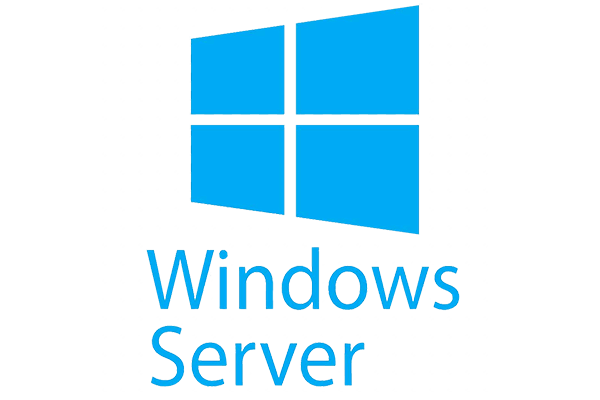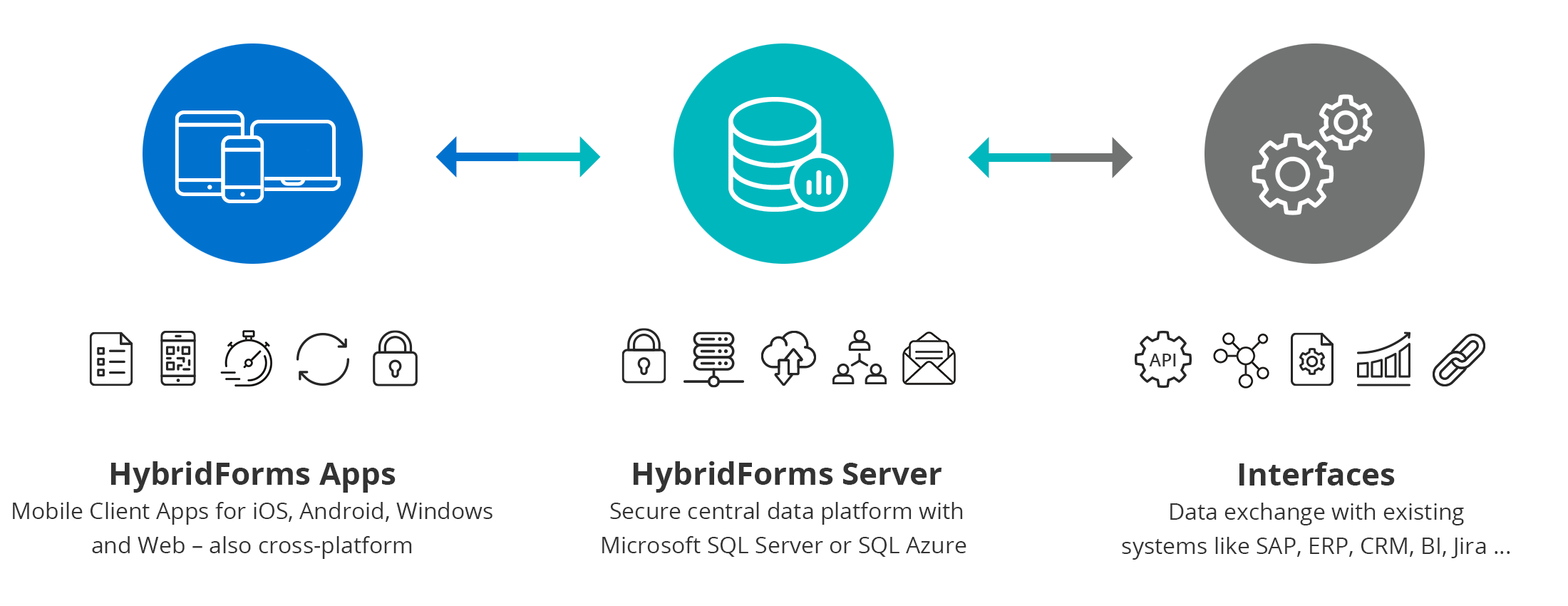System Structure & Architecture
HybridForms is a Software Platform for mobile form processes with Client Apps for iOS, Android and Windows & Progressive Web App (PWA) for desktop computers. HybridForms Server uses Microsoft SQL and Windows Server – operated On-Premises or in the Microsoft Azure Cloud.
General system structure & concepts
The system consists of a central server component, the HybridForms Core Server (SQL), and mobile HybridForms Client Apps for iOS, Android, Windows and Progressive Web App (PWA) for Web Browsers.
A HybridForms Server license is required to operate the server. A HybridForms User license (Client Access License / CAL) is required for each Client App user. The user licences are stored and administered on the HybridForms Core Server.
HybridForms Core Server: Multi System Architecture
HybridForms Core Server supports a multi-system architecture (client, tenant). HybridForms Server is available in four editions: Professional, Business, Enterprise and Operator Edition. By default, one system is operated, the Operator Edition also supports multiple systems (operator mode with clients).
HybridForms Core Server
- System 1
- Form Templates
- Form Areas
- Area 1…n | Form Items
- System 2 (only possible with Operator Edition)
- Form Templates
- Form Areas
- Area 1…n | Form Items
- System n (only possible with Operator Edition)
Systems (Clients, Tenants)
Each system can be managed separately and used for different departments or clients. The advantage of the system concept is the granular and delegable »sub« administration by local / departmental administrators.
Forms: Templates | Areas | Items
Templates
The form definitions (form data fields, layout etc.) are stored in so-called templates. Each system has its own set of templates. Templates are first created in the system by the HybridForms administrator, then assigned to the responsible developers and form designers for editing. Users and rights are also set by the administrator, as well as the allocation to an »area«.
Areas
Each template is assigned to an »area«. The areas are displayed in the mobile Clients Apps under the »Settings« options and are used to structure and display the available form types and templates.
Systems (Clients, Tenants)
Each system can be managed separately and used for different departments or clients. The advantage of the system concept is the granular and delegable »sub« administration by local / departmental administrators.
Items
The actual form data is stored as form elements (»items«) that are created from the template by instantiation (for example, manually by a user creating a new form in the HybridForms Client App).
Users: Levels of administration
HybridForms has several administration or access levels for different types of users:
Core Server Admin
The Core Server Administrator has access to all elements, especially the central server settings at the top level, as well as administrative access to all systems, templates and user licences. The Core Server Administrator can add systems and assign system administrators to them. He can assign user licences from the core user licence pool to a system and transfer free user licences of a system back to the core pool.
System Admin (Tenants)
A system administrator has access to all elements, templates and user licenses of the respective system. He can define areas, create form templates and assign the templates to developers and designers for editing.
Group Admin
This administrator manages the group functions (optional function: Group Portal for external groups and service partners for secure extranet access to your system).
Read Only User
These users have read-only access to all form elements of a specific form type or group.
Template Designer
The designers have access to the form templates assigned to them and can then edit the templates. However, they cannot change the area set for the respective template, nor can they view or change the access rights for the templates and forms.
Manage Catalogs
These users have access to the catalogues either on the Core Server or a specific system to administer the catalogue data. This data is then displayed in the corresponding selection fields of the form in the Client App.
Full Access (or Readonly Access) & API
They can access the programming interface for templates – in combination with either read only rights or full access rights in the HybridForms Admin App.
Standard User
The standard users are outside the administration hierarchy listed above, but are nonetheless shown here for the sake of completeness. The standard user can use the HybridForms App, create and access individual forms – assigned to him or a group he is a member of. He can also access the HybridForms Admin App, but only for his form elements and without administrative functions.
HybridForms Server
- Microsoft Windows Server 2016+
- Recommended: Server 2019/2022 – Edition Standard
- .NET Core 6.x+ Hosting
- Node .js 16+LTS
- WebDeploy 3.6+
- 2+ CPU
- 8+ GB RAM (Test: 4 GB)
- 100+ GB HDD
Database Service
- Microsoft SQL Server 2016+
- Recommended: SQL 2019/2022 – Edition Standard or SQL Azure Cloud
- Collation SQL_Latin1_General_CP1_CI_AS
- Base data set: 5 GB, Data set: 50+ GB
- Operation: Azure Cloud or On-Premises (Virtual Servers)
- Using ADFS: Server 2016+ ADFS 4 (OpenID Connect)



